
The Army’s Engineer and Scientist Exchange Program gives researchers a chance to grow professionally while collaborating with U.S. allies on new technologies.
by Ms. Gabriella Krohmal and Mr. Adam Genest
In Japan, U.S. Army software engineer Ross Arnold surveys what’s left of the town of Arahama, four hours north of Tokyo. Arahama was destroyed in 2011 by the Tohoku earthquake and tsunami that devastated Japan, killing 15,894 people and destroying more than 120,000 buildings, including every building in Arahama except the schoolhouse. Arnold, who’s assigned to the U.S. Army Armaments Research, Development and Engineering Center, hopes that the new software algorithm he’s been working on with Japan’s Air Systems Research Center will help U.S. and Japanese forces use drone swarms to conduct search-and-rescue operations during the next natural disaster.
In Spain, Mark Cumo, an engineer with the U.S. Army Communications-Electronics Research, Development and Engineering Center who specializes in counter-improvised explosive device (IED) technologies, executes a research plan for studying the fragmentation effects of suicide vests used against U.S. troops stationed around the world as well as our European allies. Cumo designed a cooperative research project in 2016 involving the NATO Counter-IED Center of Excellence, Spanish National Police and Guardia Civil and the German Federal Criminal Police. The results of these experiments, as well as designs for protective vests and other equipment, ultimately will be available to DOD and U.S. law enforcement agencies for use in counterterrorism activities.
In Chile, U.S. Army biologist Leanne Chacon visits Chilean army logistics regiments, conducts market research and advises the army’s health directorate on which biological identification technology and equipment will most effectively assist its efforts to identify biological agents in food, water and other vectors. In 2014, when Chacon was there, the Chilean army desperately needed this expertise and equipment, and quickly. Ebola was ravaging West Africa, and that February, Chile confirmed the first case of indigenous transmission of the Zika virus, on Easter Island.
All three scientists are part of the U.S. Army’s Engineer and Scientist Exchange Program (ESEP), a government-to-government effort aimed at increasing international cooperation between the U.S. and its allies in military research, development and acquisition.
Managed by the deputy assistant secretary of the Army for defense exports and cooperation (DASA(DE&C)), ESEP allows U.S. military and civilian personnel to be placed in foreign defense establishments, and foreign defense personnel to be placed in U.S. Army laboratories, research centers and program offices. These engineers and scientists work collaboratively with their foreign counterparts to conduct experiments, develop military materiel and technologies, and increase standardization and interoperability between the U.S. Army and its allies.
The program’s roots go back several decades. On June 25, 1963, President John F. Kennedy, speaking before leaders of the West German Bundestag, proclaimed that Germany’s problems were America’s problems. “For we live in an age of interdependence,” he declared. “Partnership is not a posture but a process—a continuous process that grows stronger each year as we devote ourselves to common tasks.”
Secretary of Defense Robert S. McNamara signed the first-ever ESEP memorandum of understanding with West Germany that same year. Over the ensuing 54 years, the U.S. and Germany have exchanged more than 1,500 engineers and scientists. The U.S. has signed 15 other ESEP memorandums with strategically important allies and partners in Europe, East Asia, Oceania and South America.
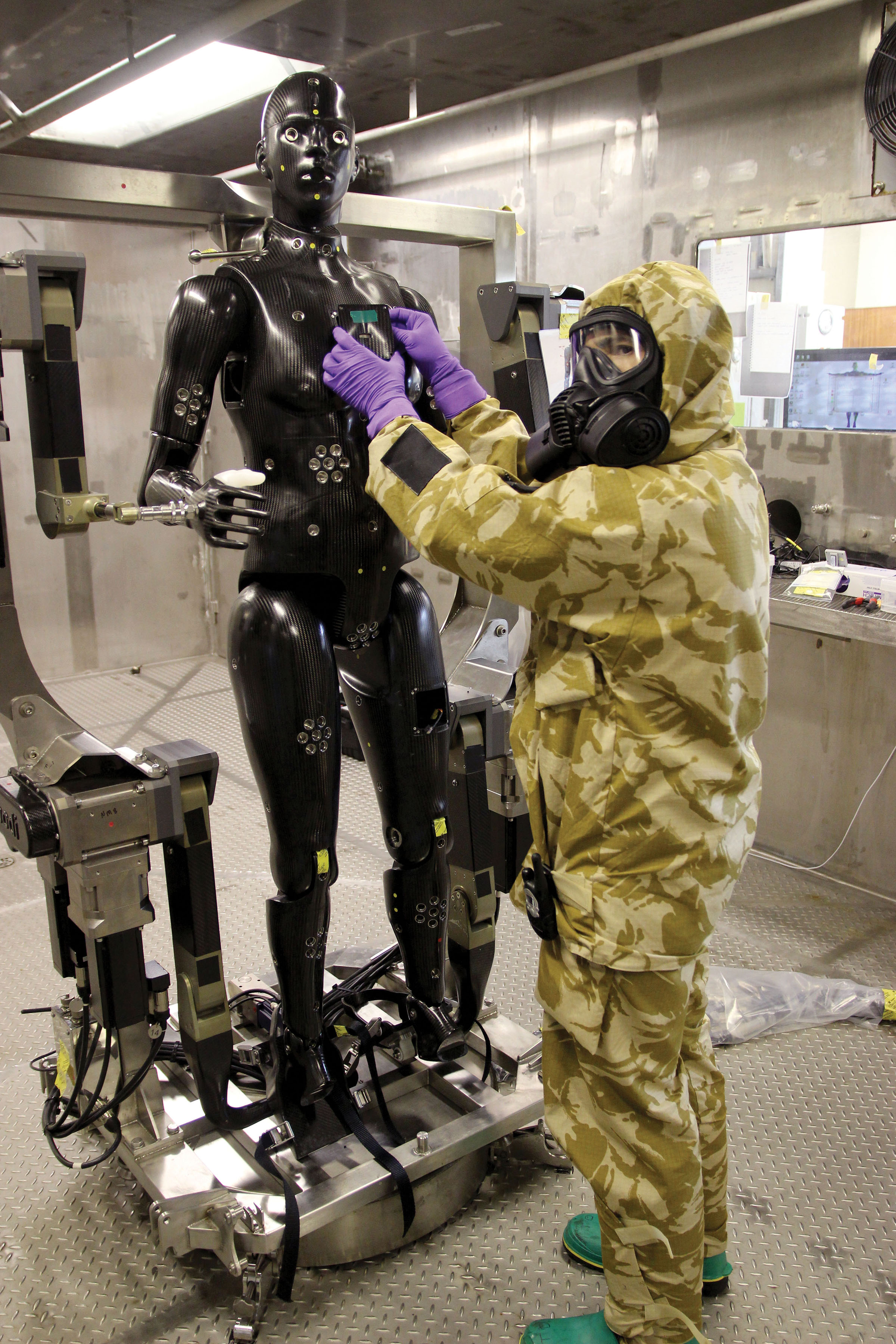
GETTING ACQUAINTED
ECBC research chemist Dr. Terrence D’Onofrio collaborated with U.K. researchers on Porton Man, a sensor-equipped mannequin capable of detecting and evaluating the impact of chemical and biological agents on warfighter uniforms, gloves and other outerwear. (Photo courtesy of Dr. Terrence D’Onofrio)
UNIQUE ACCESS TO FOREIGN TECHNOLOGY
ESEP aims to leverage the military research, development and acquisition work of U.S. allies and partners while providing opportunities to identify and develop potential international cooperative research, development and acquisition activities for the future. It is the only DOD program that affords civilian scientists and engineers the opportunity to embed within a foreign partner’s laboratories and test centers and work side by side with experts around the world.
“In every country we visit, it is well-recognized that the U.S. is a global leader in military technology. Everyone feels like they need to work with the U.S. to stay relevant,” said Lt. Col. James T. Naylor, director of the U.S. Army International Technology Center – Atlantic in Paris, an international outreach program of the U.S. Army Research, Development and Engineering Command (RDECOM). “But foreign partners always want to know why we want to work with them. I tell them: ‘We have funding and state-of-the-art facilities. But we want your ideas.’ Financial constraints in other countries require them to think creatively about materiel and affordability. In the U.S., we frequently drive toward the high-end technology by default.”
By sending U.S. engineers and scientists overseas, the Army can learn how its allies conduct research and development activities. U.S. personnel learn new technical skills by working with different software, technology, munitions, systems and codes. ESEP participants also identify opportunities for future collaboration with U.S. allies in strategic focus areas, such as Soldier lethality and protecting the warfighter from chemical and biological attacks. The focus areas link directly to the chief of staff of the Army’s priorities for Army modernization.
In the United Kingdom (U.K.), the Defense Science and Technology Laboratory has developed a one-of-a-kind mannequin capable of running, sitting, kneeling and lifting its arms to fire a weapon. Porton Man, as it is called, is covered with hundreds of sensors capable of detecting and evaluating the impact of chemical and biological agents on warfighter uniforms, gloves and other outerwear.
Dr. Terrence D’Onofrio, a research chemist from the U.S. Army Edgewood Chemical and Biological Center (ECBC), has been working with the U.K.’s Defence Science and Technology Laboratory as an ESEP participant since October 2015. ECBC, like the Army’s research, development and engineering centers, is part of RDECOM.
“There is an opportunity for the U.S. and the U.K. to begin a new collaboration and leverage the Porton Man capability as an acquisition program of record,” D’Onofrio said. “The U.S. conducts experiments using human volunteers in a simulated environment. The U.K. uses the Porton Man mannequin, which can go all day, eliminates human differences and can demonstrate different factors” such as postures and environments, he said. Research undertaken with Porton Man also could uncover how armor affects chemical or biological protectors in warfighter suits, for example, D’Onofrio said, or whether U.S. Army operational requirements should change. “Experiments with Porton Man will help ensure that the warfighter is protected from any chemical or biological challenge,” he noted.
The U.K. is just one of many partners working on capabilities that could greatly benefit the U.S. warfighter. Dr. Mark Griep’s ESEP assignment took him to South Korea, where he participated in pioneering work in nanomaterials. (See “ESEP Spotlight,” Page 49.) Because of geopolitical realities, South Korea is expediting its efforts in portable energy and is eagerly anticipating immediate payoffs from this technology. Griep hypothesized that South Korea could fully field lithium-air battery technologies to South Korean troops several years before what the U.S. acquisition system could be expected to accomplish, and that through connections he forged as an ESEP participant, the U.S. Army could have access to these advancements far sooner than had the U.S. decided to go it alone.
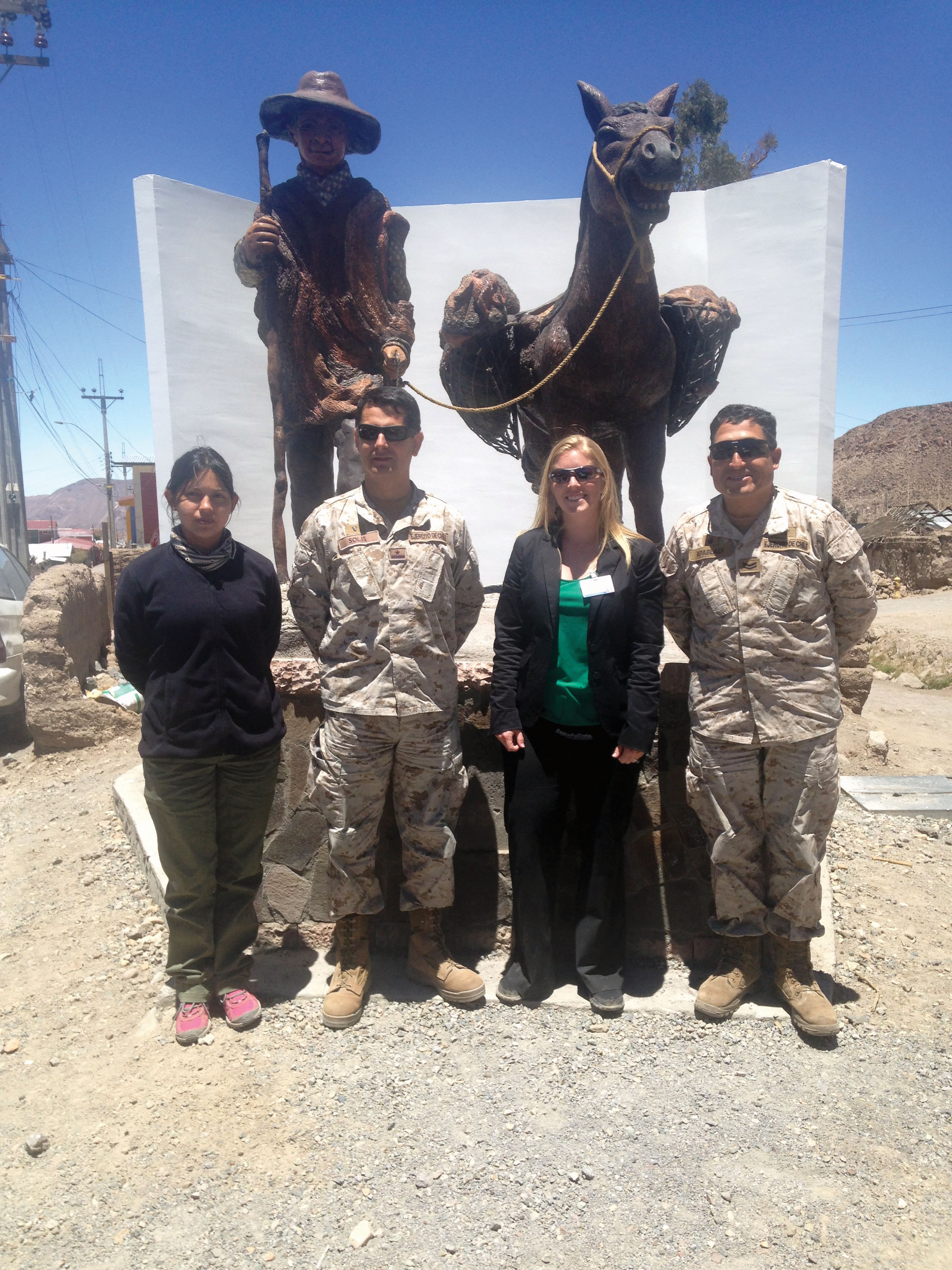
OPERATING AT A NEW LEVEL
ECBC biologist Leanne Chacon, shown here with members of the Chilean army in Putre, Chile, about 11,500 feet above sea level, traveled extensively through Chile in 2014 to ensure that pathogen detection systems would perform as needed in different climate conditions. (Photo courtesy of Leanne Chacon)
A BOON FOR PERSONAL DEVELOPMENT
In addition to allowing the U.S. to learn from its allies’ technological capabilities and research methods, ESEP enhances the professional development of those who participate. The scope of work for most ESEP assignments differs from the participants’ day-to-day work in the U.S. If an ESEP participant were a project manager or chief engineer at their home organization, for example, ESEP might offer the opportunity to reconnect with the basics by working directly in a laboratory. If an ESEP participant developed software to control artillery fire at their home organization, those same skills might be applied to search-and-rescue technology abroad.
ESEP offers participants the opportunity to build upon their areas of expertise while exploring new, challenging work in a similar but different environment or field of study. Chacon, a biological agent detection expert for ECBC who is matrixed to the Joint Program Executive Office for Chemical and Biological Defense, spent most of her Army career studying ways to detect airborne biological threats, such as weaponized pathogens. But when she arrived in Santiago, Chile, for her ESEP assignment, she learned that airborne biological threat detection was not the Chilean army’s priority. Instead, the Chileans needed help with a more pressing concern: identifying and protecting against water-, food- and vector-borne biological agents.
The new work opened Chacon’s professional horizons, exposing her to a wide range of testing environments that she had not worked in previously and to acquisition management. The Chileans were keen to use commercial off-the-shelf technology to meet their biological agent needs, and they tasked Chacon with finding and recommending devices from commercial vendors in and around Chile. “Chile has a lot of different environments, from deserts to mountains, tundra to the oceanfront,” Chacon explained. “The Chileans were interested in cost-effective, highly mobile biological agent detection technology that could be used in a wide range of conditions.”
Chacon engaged with Chilean industry and her contacts back in the U.S., finding commercial technologies and meeting with the Chilean vendors to determine whether the devices met the Chilean army’s needs. She briefed senior Chilean leaders, advising them on the available equipment and making recommendations on which devices not only identified the desired agents, but also could be used in a variety of environments.
Upon her return to the U.S. after a year in Chile, Chacon found that the skills and knowledge she had developed in Chile were highly applicable to her new role. “The Chileans wanted to use our technology for bio threat detection in soil and water, even though it wasn’t designed for that. Now I’m working within the U.S. Army to further develop technology specifically for that purpose.”
Adapting to change and exploring a new area of research also helped build Chacon’s confidence. “When I went [to Chile], I thought I could speak Spanish, but I learned I couldn’t speak ‘Chilean,’ ” Chacon recounted. “Now I’m more flexible and able to adapt to any situation. I used to be nervous conducting briefings and doing public speaking, but now that I’ve experienced briefing senior Chilean leaders in Spanish, doing the same in the U.S. is much easier—after all, at least it’s in English!”
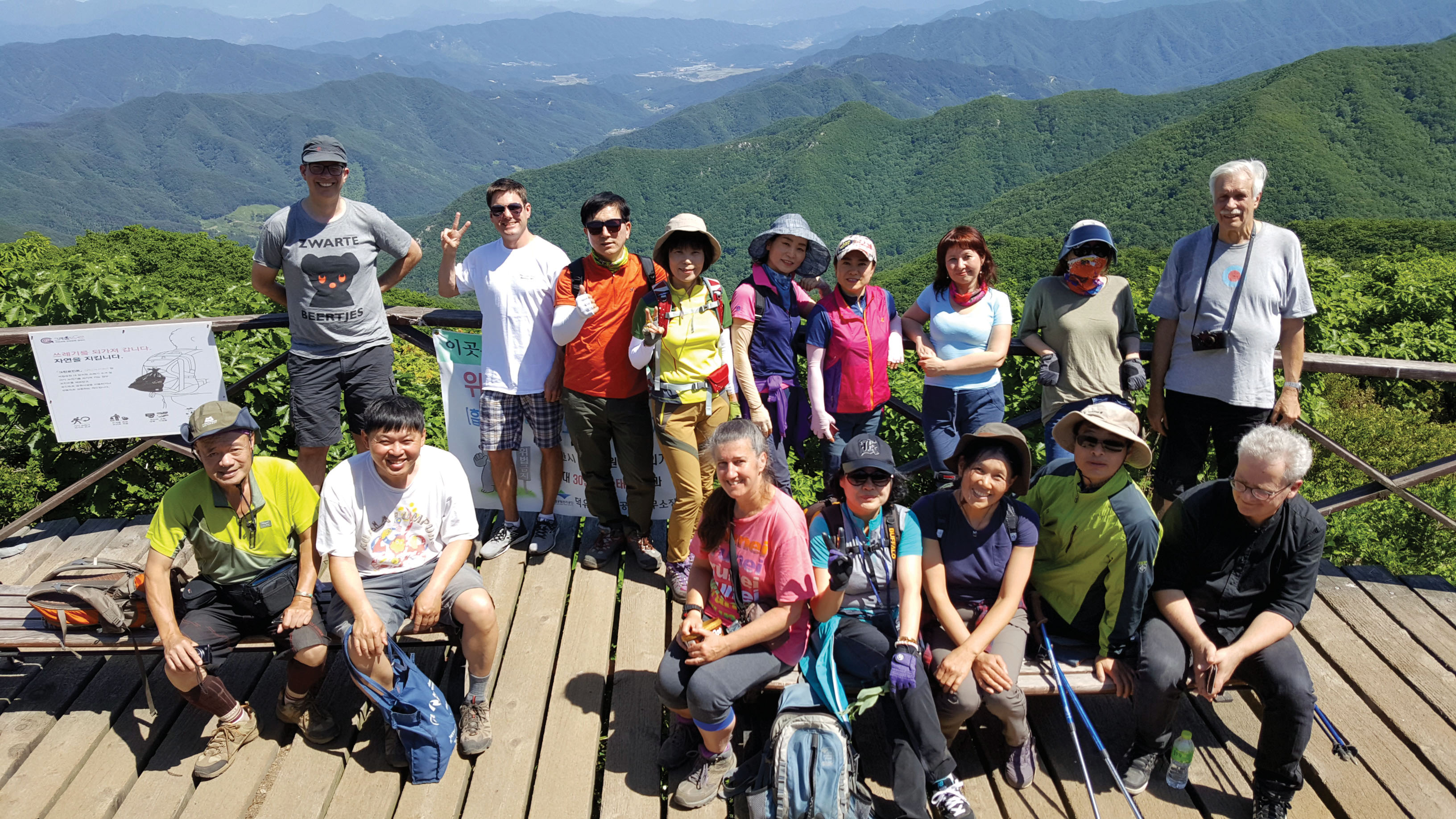
GROUP DYNAMICS
U.S. Army Engineer Research and Development Center scientist Todd Rushing, in back row, second from left, poses with co-workers during a hike in Deogyusan, South Korea. By building personal and professional relationships, Rushing left his ESEP assignment with a better understanding of that country’s challenges and of how Americans are perceived by their Korean counterparts. (Photo courtesy of Todd Rushing)
STRENGTHENING DIPLOMATIC TIES
ESEP also enables diplomacy through personal contact and military-to-military cooperation. Strengthening alliances and attracting new partners is one of the top priorities spelled out by Secretary of Defense James Mattis. “History is compelling on this point: Nations with strong allies thrive, while those without stagnate and wither,” he wrote in an Oct. 5, 2017, memorandum. “We will continue to work with our allies, partners, and coalitions … to reinforce the safety and security that underpins peace and economic prosperity for all nations.”
David Quinn, team lead for the Aeromechanics Division at the U.S. Army Aviation and Missile Research, Development and Engineering Center (AMRDEC), found that his ESEP experience, working to help the French air force validate new software for the Airborne Warning and Control System electronic flight bag, was akin to a diplomatic mission.
“In many ways, I felt like an ambassador every day, going to work, going to the market, paying bills as an American in France. It was way more than a technical exchange—it was building relationships, and it was very enlightening to experience the culture and real people of France, not as a tourist but by working side by side,” he said. Since his return to the U.S. in 2015, Quinn has participated in AMRDEC’s work on the Rotary Wing Aeromechanics and Human Factors Integration Technologies Project Agreement with France. The network of contacts he made in France continues to pay dividends for U.S. cooperative efforts.
Todd Rushing, a research scientist from the U.S. Army Engineer Research and Development Center’s Geotechnical and Structures Laboratory, found his ESEP assignment in South Korea to be an immersive experience that helped him understand the world from the viewpoint of U.S. allies. “ESEP has benefited me by expanding my perspective on the world and helping me to build a global network,” Rushing said.
“The assignment allowed me to develop an appreciation for the point of view and motivations of our ally the Republic of Korea and its people, based on their unique geopolitical environment and the potential threats that they live with every day. I will also be able to improve the way I communicate with and relate to our international partners by better understanding how the U.S. is perceived by others,” he said, adding that the assignment “allowed me to create international friendships that I plan to maintain into the future.”
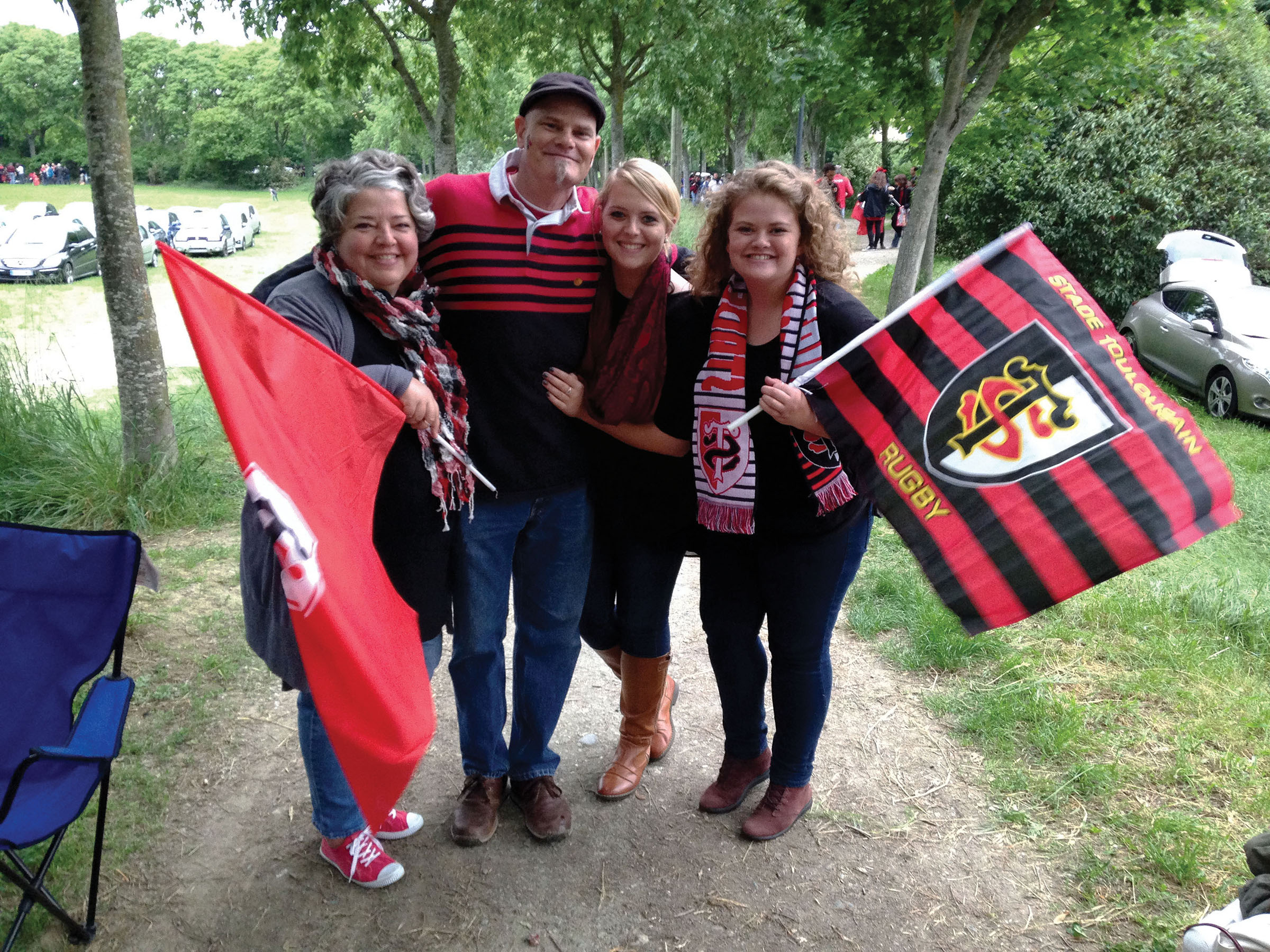
HOW PROGRAM FUNDING WORKS
To encourage U.S. participation in the program, DASA(DE&C) provides central funding to U.S. Army commands for the associated costs of sending their engineers and scientists overseas to work in allied and friendly countries’ defense establishments. In dispersing these funds annually through a competitive nomination and selection process, DASA(DE&C) covers labor, allowances and travel expenses. It doesn’t cost DOD organizations much to participate.
The program has enjoyed a steady increase in interest across the Army, with a substantial year-over-year increase in applications from Army research organizations, including RDECOM; the U.S. Army Corps of Engineers; U.S. Army Medical Command; U.S. Army Test and Evaluation Command (ATEC); and U.S. Army Space and Missile Defense Command.
Even with the program’s successes and benefits, ESEP has suffered the same resource constraints that programs and offices have experienced across DOD over the last several fiscal years. In FY16, with a budget of $2.2 million in operation and maintenance funds, DASA(DE&C) supported 11 U.S. overseas exchange assignments. A 50 percent cut in appropriations in FY17 reduced the number of centrally supported overseas assignments to five, and resource constraints projected in FY18 mean a continued reduction in supported overseas assignments, despite growing interest in the program.
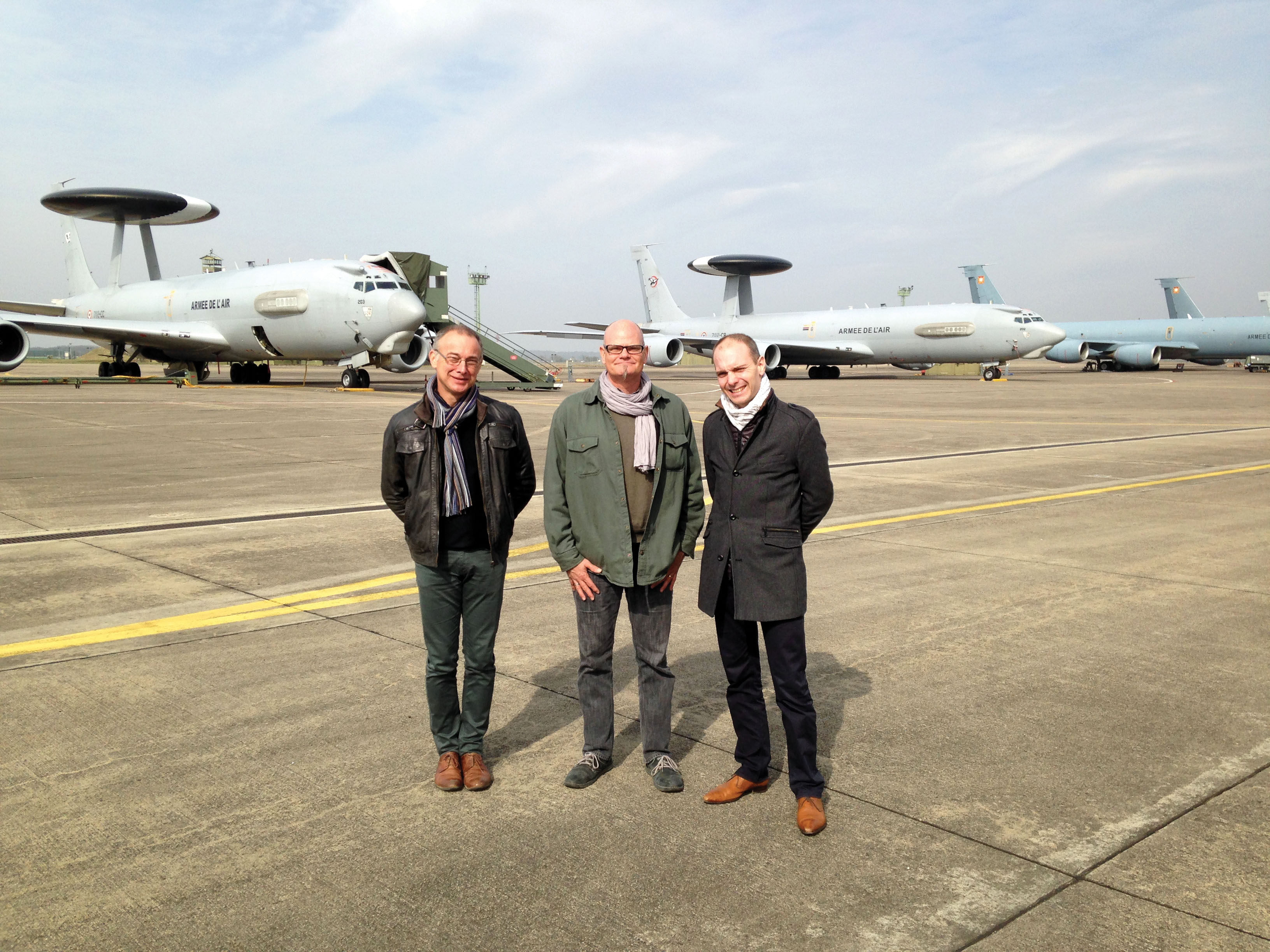
LASTING RELATIONSHIPS
AMRDEC’s David Quinn, center, who worked with French air force personnel on software development, found his ESEP assignment to be beneficial personally and professionally. Now stateside, he continues to use the contacts he made overseas in his work for AMRDEC. (Photo courtesy of David Quinn)
WHO SHOULD APPLY AND HOW
The ESEP program is aimed at midlevel professionals (GS-12 to GS-14 or equivalent). Most applicants learn about the program through their command structures, either via email or in a job announcement. The program isn’t for everyone, participants cautioned; moving your family overseas and establishing yourself in a foreign country can be a challenge and should not be taken lightly. But for those seeking an international experience in which they can grow their careers and pursue new opportunities, ESEP is a great option.
“Flexibility is the name of the game,” said Kristi Sanchez-Vahamonde, an engineer and new ESEP participant from ATEC, as she prepared to head to Germany for an assignment with the Bundeswehr Technical Center for Protective and Special Technologies. “I haven’t even boarded the airplane yet, and I’ve already grown a lot, learned a lot. It’s not easy, but it’s a once-in-a-lifetime experience.”
Foreign language skills are not required, though they are helpful. “Personality is the most important factor,” noted Naylor. “ESEP participants need to be willing to talk to people, willing to learn about new people and cultures. You can’t be pedantic. It’s important to come over with a little humility and be prepared to listen with an understanding that an exchange is a two-way street.”
DASA(DE&C) will release the next ESEP call for nominations in May 2018. Selected applicants will deploy overseas in October 2019.
For more information, contact Gabriella Krohmal at mailto:gabriella.l.krohmal.ctr@mail.mil or 703-614-3175.
MS. GABRIELLA KROHMAL is a contractor for Booz Allen Hamilton, providing ESEP program management support for DASA(DE&C). She earned her master’s degree in international peace and conflict resolution from American University’s School of International Service, and holds a B.A. in foreign affairs from the University of Virginia.
MR. ADAM GENEST is a strategic communications contractor for Booz Allen Hamilton, providing contract support to DASA(DE&C). He is a Master of Liberal Arts candidate at Harvard University, and he holds a Master of Forensic Science from George Washington University and a B.A. in homeland security and emergency preparedness from Virginia Commonwealth University.
This article will be published in the January – March 2018 issue of Army AL&T magazine.
Subscribe to Army AL&T News, the premier online news source for the Acquisition, Logistics, and Technology (AL&T) Workforce.







